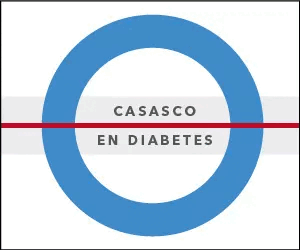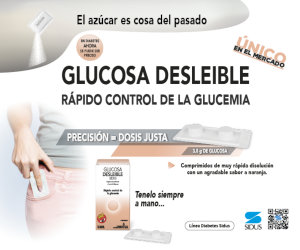Smart pens/integration with continuous glucose monitoring
Keywords:
diabetes, monitoringAbstract
Smart insulin pens and continuous glucose monitoring (CGM) play a crucial role in the management of diabetes mellitus (DM) by providing these patients and their healthcare teams with detailed insight into dosing behaviors and their impact on glycemic outcomes.
These connected devices allow:
- Automatically tracking and recording the time and amount of each insulin dose, helping to identify patterns and errors in dosing, such as missed or poorly timed doses.
- Integrating CGM data to provide a complete picture of real-time blood glucose levels, allowing for precise adjustments in insulin doses.
- Facilitating communication between the patient and the healthcare team, as data can be shared and jointly analyzed, leading to more effective counseling strategies.
- Reduce the burden of DM management by offering dose reminders, missed dose alerts, and dose recommendations based on smart algorithms.
- Improve glycemic control by promoting more frequent and accurate dosing, which has been associated with better glycemic management, especially when the frequency of correction doses is high.
Real-world studies showed that a dosing frequency of at least 3 doses per day and a missed dose rate of less than 20% were associated with improved glycemia in the general population and in adults with DM. The analysis also showed that the frequency of correction doses is positively correlated with time in range (TIR), a key indicator of glycemic control.
These two devices combined support informed decision making, promote treatment adherence, and can lead to better DM management by providing a personalized, accurate, and cost-effective approach to insulin management.
References
I. Hellman J, Hartvig NV, et al. Associations of bolus insulin injection frequency and smart pen engagement with glycaemic control in people living with type 1 diabetes. Diabetes, obesity & metabolism 2024;26(1):301-310. doi: 10.1111/dom.15316
II. Chan K, Hansen K, et al. Smart connected insulin dose monitoring technologies versus standard of care: a Canadian cost-effectiveness analysis. J Compart Effect Research 2024;13(3):e230124. doi: 10.57264/cer-2023-0124.
III. Ekberg NR, Hartvig NV, et al. Smart pen exposes missed basal insulin injections and reveals the impact on glycemic control in adults with type 1 fiabetes. J Diab Science Tecnol 2024;18(1):66-73. doi: 10.1177/19322968221104142
IV. MacLeod J, Im GH, et al. Shining the spotlight on multiple daily insulin therapy: real-world evidence of the InPen Smart Insulin Pen. Diabetes Tecnol Therap 2024;26(1):33-39. doi: 10.1089/dia.2023.0365.
Downloads
Published
How to Cite
Issue
Section
License
Copyright (c) 2024 on behalf of the authors. Reproduction rights: Argentine Society of Diabetes

This work is licensed under a Creative Commons Attribution-NonCommercial-NoDerivatives 4.0 International License.
Dirección Nacional de Derecho de Autor, Exp. N° 5.333.129. Instituto Nacional de la Propiedad Industrial, Marca «Revista de la Sociedad Argentina de Diabetes - Asociación Civil» N° de concesión 2.605.405 y N° de disposición 1.404/13.
La Revista de la SAD está licenciada bajo Licencia Creative Commons Atribución – No Comercial – Sin Obra Derivada 4.0 Internacional.
Por otra parte, la Revista SAD permite que los autores mantengan los derechos de autor sin restricciones.





































